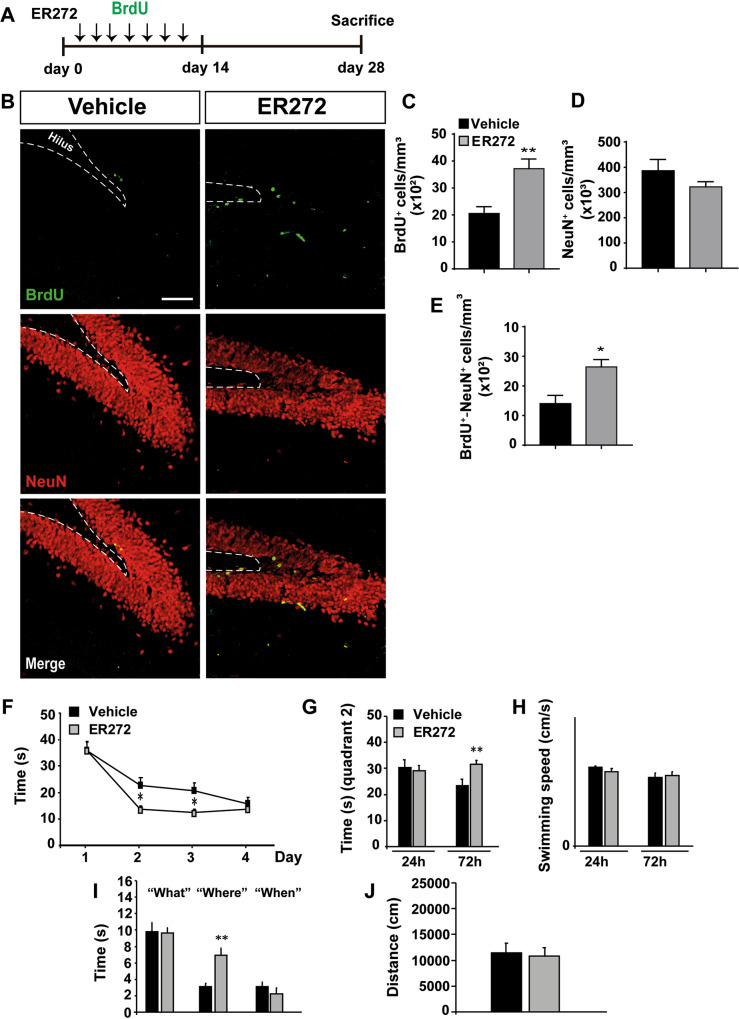Fig. 2. Long term intranasal administration of ER272 promotes neurogenesis in the DG and enhances learning and memory.
Intranasal ER272 (1 µM) or only vehicle was administered during 28 days to healthy 2-month-old adult mice. A Scheme of BrdU administration. All mice were intraperitoneally-injected with BrdU (100 mg/kg) during the first 14 days every 2 days as described in methods. B Representative confocal microcopy images of the DG of adult mice hippocampus treated with ER272 or only vehicle. Scale bar = 50 µm. The dotted lines indicate DG limits. Slices were processed for the immunohistochemical detection the proliferation marker BrdU and the neuronal marker NeuN. C Graph shows the number of proliferating cells marked with BrdU per mm3 in the DG of the indicated animal groups. Data are the means ± S.E.M of ten animals n = 10. Statistical analysis: *p = 0.0270 in two tailed unpaired Student’s t test comparing ER272 treatment with the control group (treated only with vehicle). D Graph shows the percentage of NeuN+ cells per mm3 in the DG of the indicated treated groups. Data are the means ± S.E.M of six animals n = 6. Statistical analysis: *p = 0.034 in two tailed unpaired Student’s t test comparing ER272 treatment with the control group (treated only with vehicle). E Graph shows cells that co-express BrdU and the neuronal marker NeuN per mm3 in the DG of the hippocampus. Data are the means ± S.E.M of ten animals n = 10. Statistical analysis: *p = 0.040 in two tailed unpaired Student’s t test comparing ER272 treatment with the control group (treated only with vehicle). F Scape latency in the MWM test during the 4 day acquisition phase. We did not detect a significant treatment × day effect, when we compared the groups under study [F(3, 290) = 1.61 p = 0.186]. Further assessment on individual days revealed that ER272 can significantly reduce the time required to find the platform: day 1 (p = 0.972); day 2 (*p = 0.011 vs. control; statistical power 0.728), day 3 (*p = 0.016 vs. control; statistical power 0.683), day 4 (p = 0.460). Differences were detected by Student’s t test for independent samples. G Time spent in quadrant 2 during the retention phase 24 and 72 h after the acquisition test. ER272 treatment improved performance in the retention phase of the MWM. While no differences were detected among groups in the retention phase, 24 h after acquisition (p = 0.731) in the time spent where the platform used to be located (quadrant 2), ER272 increased the time in quadrant 2, 72 h after completing the acquisition phase (**p = 0.009 vs. Control). Differences detected by Student’s t test for independent samples. H Swimming speed was not affected by the treatments in the 24 h (p = 0.539) or 72 h (p = 0.716) retention phase. Differences detected by Student’s t test for independent samples. I Episodic memory was improved in the new object discrimination test after ER272 administration. Whereas no differences were detected for parading “what” (p = 0.9333) or “when” (p = 0.319), performance for paradigm “where” was significantly improved after ER272 treatment (**p < 0.01 vs. Control). Differences were detected by Student t test for independent samples. J Graph representing motor activity. No differences were detected (p = 0.820) using Student’s t test for independent samples.

